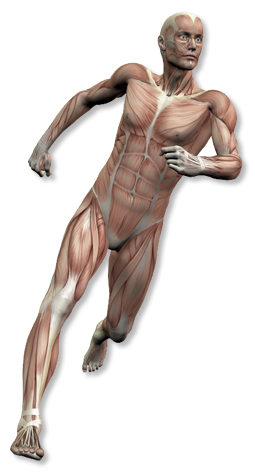Acupuncture for Shoulder Pain
Acupuncture to treat shoulder pain is a non-drug therapy being used more and more.
Arthritis Of The Shoulder
Osteoarthritis may develop over time as mechanical forces repeatedly applied to the shoulder bones stress their adjoining surfaces beyond the body's ability to continuously repair. Structural breakdown begins to outpace repair, leading to inflammation, pain, stiffness, and ultimately structural deterioration with lost mobility. Early treatment with acupuncture focuses on adjusting recruitment patterns of the shoulder muscles to improve joint mechanics. Once the condition has progressed, treatments will incorporate additional anti-inflammatory and analgesic strategies.
In its acute phases, rheumatoid arthritis is treated similarly to advanced osteoarthritis. During remissions, treatment resembles the early stage osteoarthritis approach discussed above.
Biceps Tendinitis
The biceps brachii muscle in the upper arm has two bellies with two separate points of attachment at the shoulder. The longer portion of the muscle is more often involved in shoulder disorders, likely due to its more complicated structural arrangement. The longer portion sends its tendon through the shoulder joint capsule itself (specifically, the gleno-humeral joint) to attach just above the shoulder socket, or glenoid fossa. Along this path, the tendon must thread through narrow spaces between boney structures—spaces shared by ligaments and other tendons as well. When the mechanics of shoulder movement are poorly controlled, friction occurs in these tight spaces.
Over time, tendonitis develops as the irritated tendon becomes inflamed. Acupuncture can address the inflammation and rehabilitate the shoulder by guiding muscles toward properly balanced use of the joint (selective recruitment cueing and inhibition) and by promoting neural communication with its tissues (reproprioception).
Dislocated Shoulder
When the head of the humerus, or upper arm bone, is separated away from its "socket", or glenoid fossa, on the scapula, the shoulder has been dislocated. If any of the bone structures are broken in the process, then there is also a fracture (see section on fractures of the shoulder). Even in the absence of a fracture, shoulder dislocations may involve damage to many soft tissue structures bridging the spaces between the bones of the shoulder (humerus, scapula, and clavicle). A shoulder dislocation warrants rapid medical attention so that the damage can be assessed and the joint reduced (the bones put back in place) as soon as possible. After acute care has been administered, acupuncture may play an important role in promoting soft tissue healing. A poorly healed dislocation may decrease future mobility of the shoulder and increase susceptibility to further dislocations.
Labral Tears
The shallow bony "socket" of the shoulder joint (glenoid fossa of the scapula, forming part of the glenohumeral joint) is effectively deepened by a soft tissue ridge lining its rim. This ridge is called a "labrum". Excessive excursion of the humeral head in its socket (on the glenoid fossa), including the extreme case of joint luxation/dislocation, may damage the labrum. The labrum also attaches to the joint capsule and may be subject to damage when the capsule is stretched or torn.
Rotator Cuff Tears
Several relatively small muscles coordinate to secure the head of the humerus, or upper arm bone, in its socket during actions involving the shoulder joint. Their tendons wrap the head of the humerus and form a protective cuff around the gleno-humeral joint. Proper support of the humeral position requires a shifting balance of tension from each of the rotator cuff muscles during shoulder movements. When the balance is off, any of several joint structures will be subject to mechanical stress, including the tendinous rotator cuff itself. When the cuff tears, acupuncture can address the resulting pain and inflammation while supporting rehabilitation of the joint.
Shoulder Dislocation
When the head of the humerus, or upper arm bone, is separated away from its “socket”, or glenoid fossa, on the scapula, the shoulder has been dislocated. If any of the bone structures are broken in the process, then there is also a fracture (see section on fractures of the shoulder). Even in the absence of a fracture, shoulder dislocations may involve damage to many soft tissue structures bridging the spaces between the bones of the shoulder (humerus, scapula, and clavicle). A shoulder dislocation warrants rapid medical attention so that the damage can be assessed and the joint reduced (the bones put back in place) as soon as possible. After acute care has been administered, acupuncture may play an important role in promoting soft tissue healing. A poorly healed dislocation may decrease future mobility of the shoulder and increase susceptibility to further dislocations.
Shoulder Impingement
Shoulder impingement occurs when the head of the upper arm bone, or humerus, is pressed upward into a projection of bone above the shoulder (this is called the acromion, and it projects outward from the scapula and over the top of the shoulder). Soft tissues that lie within the intervening space can become damaged and inflamed. These tissues may include the bursa and tendons of the rotator cuff muscles. Acupuncture can reduce inflammation and manage pain in cases of acute shoulder impingement, and can help retrain a patient to use the shoulder with better mechanics, reducing the risk of future injuries.
Shoulder Pain
The shoulder region involves several structures designed to attach the upper extremity to the trunk with maximal mobility. The scapula, or shoulder blade, provides a moving base that glides over the posterior surface of the rib cage. The humerus, or upper arm bone, is held to the scapula at a ball-and-socket joint (the gleno-humeral joint). The arm is therefore able to rotate relative to the scapula while the scapula shifts its position on the trunk. The clavicle provides the only bony attachment of the scapula to the trunk, and it rotates readily about its central attachment point to in turn allow for scapular movement.
These major moving parts are tethered together by a system of ligaments and can be actively controlled by neuromotor inputs to muscles crossing the shoulder region. Because the humerus, scapula, and clavicle are so mobile, the muscles have to operate in a carefully coordinated fashion to prevent stress on the ligaments and the bursae that lubricate the tight joint spaces of the shoulder.
When muscular coordination across the shoulder is poor, any of several specific structural weak points can be torn, stretched, compressed, or cracked. Damage may occur all at once or over time. Whether the injury is acute or chronic, acupuncture can address the inflammation and rehabilitate the shoulder by guiding muscles toward properly balanced use of the joint (through selective recruitment cueing and inhibition) and by promoting neural communication with its tissues (reproprioception).
Shoulder Separation
When the clavicle is separated from its proper attachment point on the scapula (a boney projection over the shoulder called the acromion), a shoulder separation has occurred. This is also called an acromioclavicular joint, or AC joint, separation. Ligaments ordinarily secure these two bones at their attachment site. Some degree of damage to those ligaments will occur when the bones are separated. Acupuncture can promote healing of the ligaments and help rehabilitate the shoulder during recovery.
Shoulder Pain of Body Pains

Speak With An Acupuncturist To See How We Can Help You!
Call 206.622.0246


 Shoulder Pain List
Shoulder Pain List